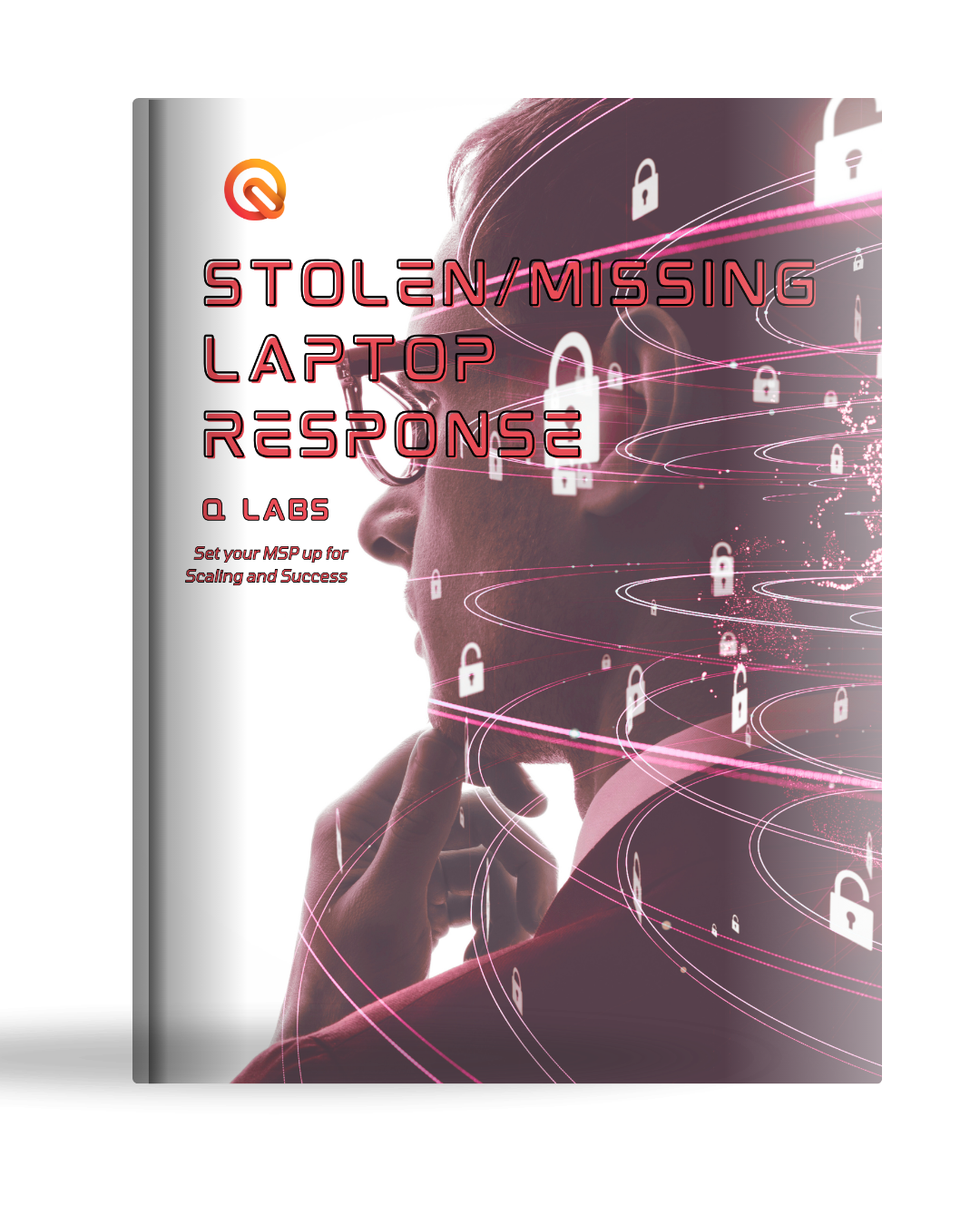

MSP operatives, are you constantly responding to IT issues rather than preventing them? Q Labs understands this pain point. Remote Monitoring and Management (RMM) provides a better approach to managing your clients’ IT infrastructure and scaling your MSP operations.
Understanding RMM
Remote Monitoring and Management (RMM) consists of software that allows IT service providers to monitor and manage clients’ IT assets from afar. This technology helps businesses spot and fix problems before they affect operations. Through RMM software, IT teams receive real-time information, automate repetitive tasks, and maintain the health of their clients’ systems.
The software enables companies to monitor, analyze, and access their clients’ computers, devices, IT infrastructure, and systems. This guide examines RMM, its advantages, essential features, and how it transforms IT operations.
Advantages of RMM Solutions
Implementing an effective RMM solution offers several advantages to IT service providers:
Reduced Costs: RMM software decreases the need for expensive help desk calls by addressing potential issues early. It reduces system failures, which leads to fewer required IT support staff and lower operating costs. The software also allows IT employees to work remotely, fixing issues without in-person visits.
Early Problem Detection: RMM tools offer real-time monitoring and alert management, which helps IT teams identify and solve issues before they affect business activities. This approach ensures less downtime and better service reliability.
Automated IT Operations: RMM software handles routine maintenance tasks automatically, allowing IT support staff to concentrate on more complex projects. Tasks such as system restores, file cleanups, and software updates can run automatically, increasing efficiency and productivity.
Update Management: Remote Monitoring tools include comprehensive update management capabilities, keeping systems current with the latest security patches and software updates. This helps businesses maintain a secure and stable IT environment.
Data and Analysis: RMM systems provide extensive reporting options and analytics, which allow IT teams to create data-based goals for their support activities. Reports can appear on demand or on schedule, offering valuable insights for task completion, billing, and overall system health.
Essential RMM Tool Features
To effectively monitor and manage IT assets, RMM software includes various important features:
Real-time Monitoring and Alerts Management
IT Automation and Scripting
Update Management
Reporting and Analytics
Artificial Intelligence
AI-powered RMM systems analyze historical data and patterns to predict potential issues before they occur, allowing for preventive maintenance and reducing downtime
AI-driven RMM platforms can automatically fix common issues and perform routine maintenance tasks, reducing manual work and improving efficiency
RMM Agent: Device Monitoring and Management
The RMM agent serves as the central component of device monitoring and management, providing comprehensive oversight of IT infrastructure from one central console. By placing agents on networked devices, IT administrators gain immediate visibility into system health, performance metrics, and security status.
These agents continuously collect and send data to the platform, enabling proactive RMM monitoring and quick response to new issues. With detailed insights from the agent, IT teams can find anomalies, identify bottlenecks, and optimize resource allocation to ensure optimal performance and reliability.
The agent also simplifies remote support and maintenance tasks, allowing technicians to troubleshoot problems, deploy patches, and perform updates easily across distributed environments. Whether for servers, workstations, or mobile devices, the RMM client delivers exceptional device monitoring and management capabilities, helping organizations maintain high operational efficiency while reducing downtime and security risks.
SNMP Monitoring
Monitoring SNMP (Simple Network Management Protocol) devices involves using software tools to gather and analyze data from network devices that support SNMP. In addition to monitoring your customers’ computers and servers (via installed agents), SNMP monitoring extends your visibility to network infrastructure.
MacOS Monitoring
MacOS monitoring involves overseeing and analyzing the performance, health, and security of Apple’s macOS operating system running on Mac computers. This monitoring ensures the efficient operation of individual Mac machines and helps manage larger groups of Mac devices in enterprise environments.
Linux Monitoring
Linux monitoring involves overseeing and analyzing the performance, health, and security of Linux-based operating systems running on servers, desktops, or other devices. This monitoring ensures the efficient operation of Linux systems, identifies performance bottlenecks, and maintains system security.
RMM vs MDM (Mobile Device Management)
RMM stands for Remote Monitoring and Management, while MDM stands for Mobile Device Management. Both serve as vital components of modern IT infrastructure but address different purposes based on specific business needs.
When comparing RMM with MDM, each plays distinct yet complementary roles in IT management. RMM primarily focuses on overseeing and maintaining the health and performance of an organization’s entire IT infrastructure, including servers, workstations, and networking devices.
MDM solutions concentrate on managing and securing mobile devices such as smartphones, tablets, and laptops across an organization. While RMM ensures smooth operation of backend systems, MDM protects the endpoints accessing these systems, enforces security policies, and safeguards sensitive data.
Selecting the Right RMM Tool for Your MSP
Choosing the appropriate Remote Monitoring and Management (RMM) tool significantly affects operational efficiency, security, and business growth for MSPs. With many options available, finding the RMM solution that matches your MSP’s specific needs presents both challenges and opportunities.
RMM for MSPs: The Q Labs Approach
At Q Labs, we understand MSPs need specialized RMM features to effectively manage and support multiple clients with diverse IT environments. Our expertise has identified several critical components:
Multi-tenancy Support: The ability to manage multiple clients and their environments from a single dashboard is essential for MSPs with 300-3000 endpoints. Look for RMM solutions with strong multi-tenancy support, allowing you to separate client data, configurations, and policies securely while maintaining efficiency.
Scalability for Growing MSPs: MSPs managing 300+ endpoints need solutions that grow with them. Your RMM solution should expand easily to accommodate your growing client base without requiring complete infrastructure overhauls every few years.
Advanced Automation and Scripting: MSPs should prioritize automation features that handle routine tasks across multiple client environments. Support for scripting languages like PowerShell or Python can extend automation capabilities. Q Labs has seen MSPs reduce ticket volume by up to 40% through proper automation implementation.
Customizable Alerts Based on Client OML: Effective alerting helps identify and resolve issues quickly. MSPs should select solutions with customizable alerting and notification features that can be adjusted based on each client’s Operational Maturity Level (OML). This allows for appropriate alerting thresholds, escalation policies, and notification channels specific to each client’s needs.
RMM Optimization for Larger MSPs: For MSPs managing 1000+ endpoints, RMM optimization becomes critical. This includes:
Client-Specific Configurations: MSPs need the ability to create both global and client-specific configurations. This allows for consistency across your entire client base while still accommodating unique client requirements.
Service Utilization Rate Tracking: The ability to track how clients use your managed services helps identify upsell opportunities and ensures you’re delivering appropriate value.
Brief Guide for Other Business Types
For IT Departments: Enterprise IT should focus on scalability, centralized management, automation capabilities, comprehensive security features, and detailed reporting tools.
For Small Businesses: Small businesses benefit from easy-to-use interfaces, basic automation, essential security features, future growth potential, and integration with existing business tools.
Optimizing RMM for MSP Success: The Q Labs Approach
With the global managed service market projected to reach $372.6 billion by 2028, MSPs need to optimize their RMM implementation to stay competitive. Q Labs helps MSPs focus on five critical RMM optimization techniques:
1. The Disk Space Management Technique: Set up proactive alerts and automated responses for low disk space with escalating actions:
2. The Staged Patching Process: Implement controlled update deployment with:
3. The Ticket Categorization System: Use automation to manage tickets efficiently:
4. The Configuration Management System: Automate device setup with:
5. The Reporting Automation System: Develop reporting processes that demonstrate your value:
Implementing these techniques helps MSPs transform their operations into proactive, efficient, and scalable businesses. The key is continuous refinement and expansion of your automation strategies.
MSP Operational Maturity and RMM: The Q Labs Framework
At Q Labs, we’ve developed a 5-level Operational Maturity Model (OML) specifically focused on RMM usage and automation for MSPs:
Level 1: Reactive (The Rookie Agent)
Level 2: Efficient (The Field Agent)
Level 3: Proactive (The Special Agent)
Level 4: Aligned (The 00 Agent)
Level 5: Strategic (The Q of MSPs)
For MSPs with 300-3000 endpoints, moving up this OML ladder creates significant competitive advantages and efficiency gains.
Need more classified information? Infiltrate our Cleared Access program for top-secret SOPs, automation templates, and more. Your MSP’s success may depend on it. No pressure.


Get exclusive insights on MSP operations, automation strategies, and business scaling tactics delivered straight to your inbox.
No fluff, just actionable SOPs, industry intelligence, and behind-the-scenes expertise from the elite operatives at Q Labs.
What you’ll receive:
📩 Sign up now and transform chaos into clockwork!
